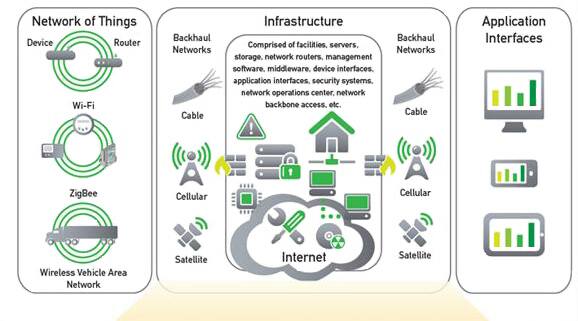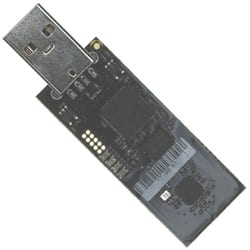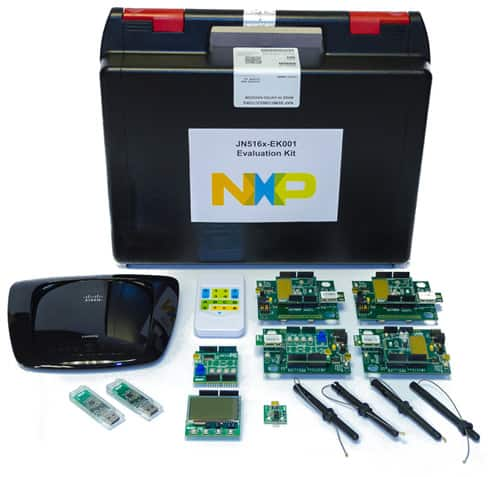M2M Networks Leverage Low-Cost Radio Modules Across Multiple Standards
投稿人:电子产品
2013-07-25
Machine-to-machine (M2M) networks rely heavily on wireless connectivity, typically employing Wi-Fi and/or ZigBee, cellular modems (GSM, LTE, etc.), or a proprietary network interface to move data and control information between nodes. Each of the network nodes typically include a controller that handles the protocol stack and provides data encryption to keep hackers and other intruders out of the networks. This article will examine the latest developments in highly-integrated Wi-Fi, ZigBee, cellular modem, and other wireless modules that target embedded radio applications for M2M applications.
The ability of machines to talk to each other is accelerating, thanks to the widespread availability of wireless networks and Internet connectivity, as well as low-cost radio modules. Today, it is possible for vending machines to “phone home,” letting dispatchers know when they have run out of stock. In addition, dispatchers can change prices remotely during peak consumption periods. Cars are starting to intercommunicate to prevent accidents, control highway speeds, and enable overall safer driving. Cars and trucks that are part of a fleet can automatically check in when returning to rental car lots, company car-pools, or shipping facilities. The ability to use M2M technologies to optimize vehicle routes and identify the closest appropriate service vehicle to dispatch to a trouble spot can provide huge environmental and cost savings.
The Smart Grid, with its distributed network of smart utility meters and smart homes, is a good example of how an M2M network can monitor, control, and analyze energy use (Figure 1). Systems can then perform analytics on the collected data and make intelligent decisions regarding the most effective way to deliver the energy. Factory automation systems and smart office buildings are yet other applications in which M2M communications systems are making headway into everyday activities.

These, and many other M2M applications, can be implemented via low-cost wireless modules or chips that implement a variety of standards including ZigBee, GSM/EDGE or other cellular radios standards, Wi-Fi, Z-Wave, and proprietary communication links. Such solutions can readily be embedded into systems to implement point-to-point links, local area networks, mesh networks, and still other schemes that enable devices to communicate. The type of communications and system architecture will vary depending on the number of nodes needed, latency requirements, cost, and other factors. Common to just about all of the applications is the need for two-way communications and control.
M2M communications options
The emergence of online banking and other information technology services has spearheaded development of commercial cybersecurity offerings to protect financial, industrial, and personal data. Many of the same companies are now actively developing or partnering with vendors in the M2M and Smart Grid markets to add security to the wireless systems, so that hackers will not be able to compromise M2M networks.
ZigBee, due to its low power, embedded encryption capability, and the high level of possible integration, has become an economical solution for many industrial systems and sensor networks. Many players in the market sell chips and embeddable modules. Depending on application requirements, companies such as Atmel, Freescale, Microchip, NXP, Rabbit Semiconductor, Silicon Labs, and Texas Instruments offer chip-level solutions for designers that need to build their own solutions due to cost or size constraints. There are also numerous complete ZigBee module suppliers providing quick time-to-market solutions. These suppliers include Atmel, Digi International, Laird Embedded Wireless Solutions, MMB Research, Murata, and many others.
Evaluation kits available from most companies provide a good way to experiment with various configurations, and vendors offer a wide selection of evaluation boards to test your application. For example, a low-cost solution from Atmel consists of a small USB-plug-in-module, designated ATAVRRZUSBSTICK (Figure 2), that can be used for simple proof-of-concept. Additional kits from Atmel address ZigBee RF4CE, which demonstrates the unique performance of the latest Atmel 2.4 GHz system-on-chip (SoC) solution, the ATmega128RFA1. The kit is a hardware platform for evaluating the ZigBee RF4CE stack, including the ZigBee Remote Control profile, and the ZigBee PRO stack, including the ZigBee Light Link profile. Included in the kit are two Radio Controller Boards (RCB) assembled with the ATmega128RFA1, and a SMA connector at the RF port. The RCB is powered by two AAA batteries and forms a fully functional, portable, wireless node.

Evaluation kits, such as the JN516x-EK001 from NXP’s partner Jennic (Figure 3), come with multiple boards, antennas, and other accessories to try out various scenarios. Designed for use with the NXP JN516x series wireless MCUs suitable for JenNet-IP, RF4CE remote control and ZigBee applications, the kit includes a series of wireless carrier boards, plug-in expansion boards, USB dongles, a specially programmed Cisco router, and a complete SDK.
A Smart Lighting demo using of nearly all the kit’s components is the JenNet-IP demo. The demo uses the router to support USB connection to a WLAN or the Internet. The evaluation kit can easily be flash programmed for use with ZigBee LL, ZigBee SE, or RF4CE demos.
The ZigBee SE demo lets the user experiment with an energy service portal (via the USB dongle), an in-premise display (using the display expansion board), stand-alone meters for electricity and gas, or a range extender.
The ZigBee LL demo gives the designer remote control of color LEDs on the lighting expansion board. The RF4CE demo lets the user select, play, forward, stop, pause, or change the volume on Windows Media Player.

Digi International offers a wide array of OEM modules that include either cellular, ZigBee (2.4 GHz), or 900 MHz radio interfaces. The Connectport X2e, for example, has a cellular interface that allows smart energy HAN devices to be deployed in small to medium size businesses and residential properties. Some of the embeddable ZigBee modules also come in extended-range versions that include higher-power RF amplifiers that can give the modules a line-of-sight range of 28 miles (900 MHz). Digi also offers the Device Cloud by Etherios, which provides remote management and configuration services for all devices, helping utilities deliver effective and efficient management services on these systems.
The many solutions offered by chip and module vendors give designers a wide range of system implementation options that can meet their application requirements for range, power, cost, data rate, and other criteria. As the number of M2M, or “Internet of things”, applications continue to grow, engineers can expect that part volume will increase and costs will continue to decrease.
免责声明:各个作者和/或论坛参与者在本网站发表的观点、看法和意见不代表 DigiKey 的观点、看法和意见,也不代表 DigiKey 官方政策。







 中国
中国